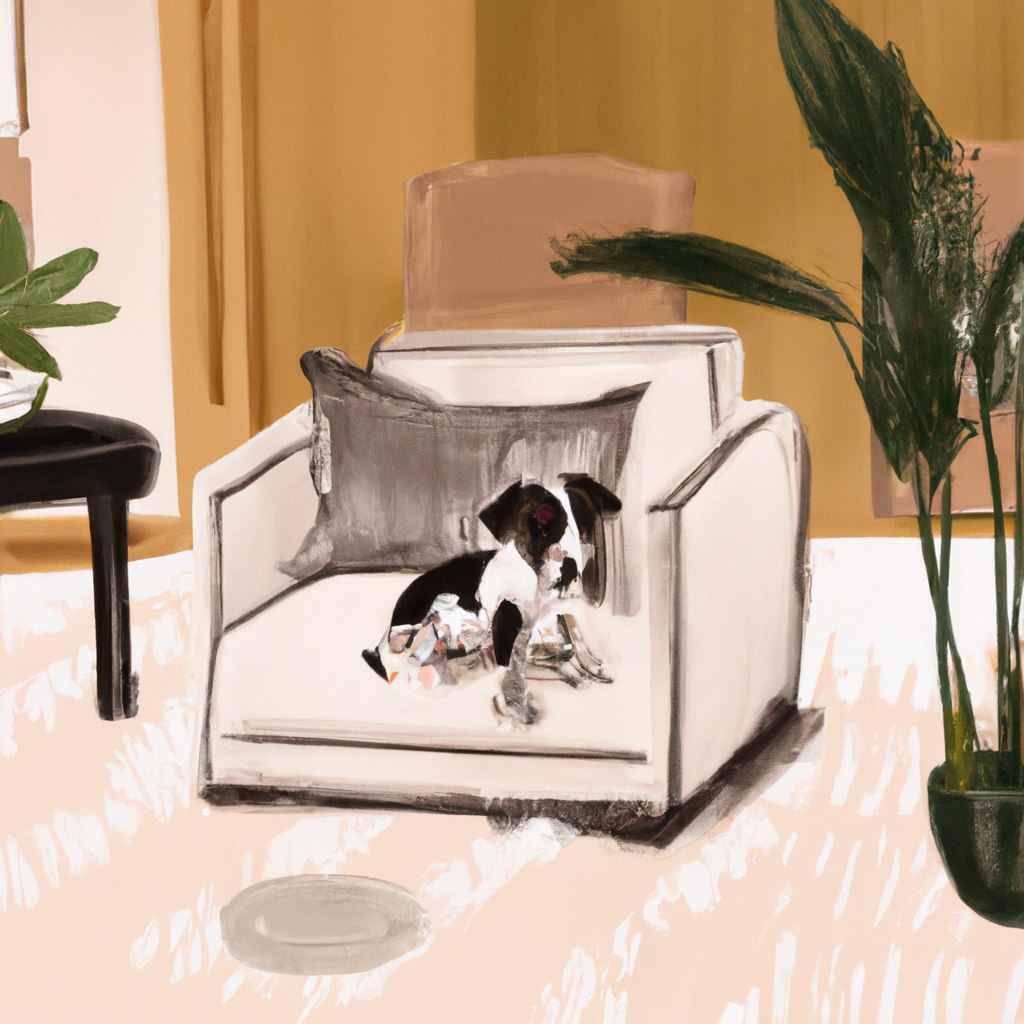Introduction to Flea Woes

Fleas—tiny but mighty pains in the rear. If you’ve ever had a dog, you’ve met these little jerks. They make themselves at home on your furry friend, and suddenly, it’s a war zone. You’ve got an itch, your dog’s scratching like a maniac, and you’re contemplating burning down the house. I get it. Been there, done that, and got the flea-bitten T-shirt. So, let’s chat about the best way to kill fleas on dogs and keep our sanity intact.
Fleas love your dog almost as much as you do. But why? We’ll get to that in a bit. For now, let’s focus on why they’re your worst nightmare. They hide, they bite, they multiply faster than a rumor in a small town. Natural methods, you ask? Oh, they’re out there. From flea baths to combing techniques, it’s all about finding what works for you and your four-legged pal.
Why Fleas Love Dogs
Alright, here’s the dirt. Fleas infest dogs ’cause dogs are warm, cozy, and have that delicious blood buffet. It’s like a five-star hotel for fleas. These little vampires are drawn to the warmth and the smell. They hop on and decide they never want to leave.
So, what are the reasons fleas infest dogs? Picture this: your dog is the ideal host. With fur to hide in and blood to feast on, it’s no wonder fleas make themselves at home. They lay eggs, and before you know it, you’ve got a flea metropolis. And don’t get me started on how fast they reproduce. It’s like they’re competing in some kind of flea Olympics—who can lay the most eggs and ruin your day.
Now, how do we stop these little freeloaders? Combatting fleas on pets is more than just spraying chemicals and hoping for the best. It’s about understanding the enemy. Fleas are drawn to dogs for their blood and warmth, so our mission is to make your dog a less appealing host.
Spotting the Unwanted Guests
So, you suspect your dog’s got fleas. How do you know for sure? The signs of fleas on dogs aren’t always obvious, but with a little detective work, you can spot those pesky critters. Your dog scratching like it’s going for some kind of record is a big clue. You might notice tiny black specks—flea dirt—on their coat. It’s basically flea poop, but calling it dirt makes it sound less gross.
The next step is figuring out how to kill fleas on dogs naturally. You want to save your dog from the itch-fest without turning your home into a chemical plant. There are plenty of flea removal techniques for dogs that don’t involve toxic sprays. We’re talking about stuff like essential oils, diatomaceous earth, and a good ol’ fashioned flea comb.
But first things first, you need to confirm the presence of these tiny terrorists. Look for redness, irritated skin, and those infamous black specks. Once you’ve got your evidence, it’s time to plan your attack.
The Bath Time Battle Plan
Now, let’s talk flea baths. Ah, the joys of bathing a dog. It’s a mix of chaos, water everywhere, and a dog that looks like you’re trying to drown it. But it’s an essential part of your arsenal. Flea bath instructions are pretty straightforward. You need a good flea shampoo, some patience, and a towel—lots of towels.
Here’s the deal: get your dog wet and lather that flea shampoo like it’s going out of style. Make sure you cover all the bases—ears, belly, tail. Let it sit for a while, let the fleas regret their life choices. Rinse it off, and voilà, you’ve just started the war on fleas.
But don’t stop there. The bath is just the beginning of your campaign. Follow it up with a natural flea repellent. These are gentle on your dog and relentless on fleas. You’re not just washing the fleas away; you’re sending a message—your dog ain’t a flea hotel anymore.
The Power of the Flea Comb
Ah, the flea comb. It’s like a magic wand, but for fleas. Using a flea comb effectively is all about technique. It’s not just a comb; it’s a weapon in the fight against fleas. After the bath, when your dog is clean and slightly damp, grab that comb.
Start at the head and work your way back. Go slow, and keep a bowl of soapy water handy to dunk the comb in. Watch those fleas get trapped between the teeth of the comb and meet their watery demise. It’s a satisfying moment—like winning a small battle in the larger war.
A flea comb is one of the best flea removal techniques for dogs. Not only does it help remove adult fleas, but it also gets rid of the eggs. You’re cutting off their supply line, making it harder for them to stage a comeback. It’s tedious, sure, but it’s worth it.
So, there you have it—a personal guide to dealing with fleas on your beloved dogs. It’s not a walk in the park, but every flea you kill is one less itch for your dog. Stay vigilant, and remember, you’re not alone in this. Thanks for sticking with me through this flea-ridden journey, and may your days be itch-free.
Unconventional but Effective: Natural Remedies for Fleas
So, you’ve got a flea problem. Join the club. It’s like having a tiny army setting up camp on your dog—uninvited, of course. But before you go reaching for the industrial-grade chemicals, let’s chat about some natural flea remedies for dogs. You know, those unconventional tricks that might just do the job without turning your home into a science experiment.
First up, there’s the classic apple cider vinegar bath. Dogs hate it, fleas hate it even more. Mix equal parts water and apple cider vinegar, douse your furball, and watch those fleas run for the hills—or at least the backyard. Then there’s coconut oil. It sounds like something you’d put in a smoothie, but fleas despise it. Rub a little into your dog’s coat, and it’s like you’ve just thrown a wrench into the flea party.
And let’s not forget about the good old lemon spray. Boil a sliced lemon in water and let it sit overnight. In the morning, spray it on your dog’s coat. It’s like sending a citrusy eviction notice to those pesky critters. These remedies might sound like they’re straight out of a witch’s brew, but hey, if they work, who are we to judge?
When to Call in the Pros: Understanding Flea Infestations
Alright, so maybe your natural flea remedies for dogs aren’t cutting it. There comes a time when you might need to wave the white flag and wonder when to hire a flea exterminator. It’s not a defeat—it’s a tactical retreat.
Imagine this: you’ve tried everything, and your dog still looks like he’s in a constant state of itch. You’ve vacuumed every nook and cranny of your house, washed every piece of fabric that isn’t nailed down, and yet, fleas persist. That’s when you know it’s time to call in reinforcements.
Flea infestations are like that annoying song stuck in your head—they just won’t go away. And sometimes, it’s best to leave it to the folks with the big guns. Professionals have the tools and expertise to tackle fleas at every stage of their life cycle. You might think it costs an arm and a leg, but sometimes peace of mind is worth a few extra bucks. When your dog finally stops itching and looks at you like you’re a hero, you’ll know it was money well spent.
The Battle of the Ages: Flea Collars vs. Topical Treatments
In the ongoing saga of flea control, there’s an age-old debate: flea collars vs. topical treatments. It’s like choosing between two different flavors of disaster prevention. Both have their merits, but which is the best way to kill fleas on dogs?
Flea collars are the old-school option. Pop one on your dog, and it starts working its magic. The chemicals spread through your dog’s coat, creating a flea force field. They’re generally easy to use, and some can last for months. But, if your dog loves to roll in the mud or swim like a dolphin, you might need a backup plan.
On the flip side, topical treatments are the new kids on the block. You squeeze a little liquid between your dog’s shoulder blades, and voilà—fleas start their exodus. These treatments work fast and are usually effective. However, they can be pricey. It’s like deciding between fast food and a gourmet meal—both fill you up, but one might leave a bigger dent in your wallet.
Crunching Numbers: The True Cost of Flea Control
Let’s talk money—because no conversation about pet care is complete without it. The cost of flea treatments for dogs can vary like the weather, and just when you think you’ve budgeted, surprise! Another expense pops up.
Flea collars might set you back $20 to $50, depending on the brand and how fancy you want to get. Topical treatments can range from $50 to $100 for a three-month supply. And if your flea situation is dire, hiring a flea exterminator could cost you anywhere from $100 to $500—or more if you’ve got a sprawling mansion.
But don’t lose hope. Effective flea control options don’t have to break the bank. Sometimes a little DIY effort and consistency can save you a ton of cash. Keep your house clean, wash your dog regularly, and you’ll be on the right track. Money might not grow on trees, but neither do fleas—thank goodness for that.
That Flea-Free Feeling: Keeping Your Dog Safe Over Time
Here’s the dream: a flea-free home, a happy dog, and you, sipping coffee without a care in the world. Long-term flea prevention for dogs is the name of the game, and with a bit of effort, it’s possible.
First, stay consistent. Regularly check your dog for fleas—make it a habit, like brushing your teeth. Vacuum your home often, especially if your dog has a favorite hangout spot. Wash your dog’s bedding and toys. It’s not glamorous, but it’s effective.
Consider rotating treatments. Sometimes switching between flea collars and topical treatments can keep fleas guessing and keep them at bay. It’s like a game of chess, but you’re always one step ahead.
In the end, managing flea infestations in pets is about persistence. It’s about not giving up, even when you’re tired and just want to plop down on the couch. Your dog relies on you, and let’s be real—there’s nothing quite like that flea-free feeling. Thanks for sticking around, and may your days be flea-free and full of wagging tails.
The Role of Diet in Flea Prevention
Alright, let’s kick things off with what your pup is chowing down on. You ever notice how we feel a bit more sprightly when we eat right? Our furry pals are no different. Listen, a solid diet can be your dog’s secret weapon in the battle against fleas. We’re talking omega-3 and omega-6 rich foods. Think fish oil or flaxseed. They act like a natural shield. And then there’s garlic—yeah, the stuff that keeps vampires away. It might just help with fleas too, but don’t go nuts with it. Too much and you might have a smelly situation on your hands. A balanced diet isn’t just for show. It’s like giving your dog a tasty suit of armor.
How to Keep Your Home Flea-Free
Now, let’s talk about your home. Keeping it flea-free can feel like trying to keep sand out of your shoes at the beach—annoying and never-ending. But hey, it’s possible. Regular vacuuming is your new best friend. It’s not just a Saturday chore anymore. With a bit of elbow grease and dedication, you can send those tiny pests packing. Wash your dog’s bedding often. Don’t let it become a flea motel. And remember, it’s not a one-and-done deal. Make this a regular routine. It’s like brushing your teeth—do it often and it becomes second nature. Flea control home tips are all about consistency.
Natural Remedies: Friend or Foe?
Alright, now we’re at the crossroads of natural remedies. Essential oils, vinegar sprays, diatomaceous earth—fancy words, right? But do they really work? It’s a mixed bag. These solutions are like flipping a coin. Sometimes they hit the mark, sometimes not so much. It’s tempting to go the natural route. Heck, I get it. But keep your expectations grounded. Fleas are pesky little critters. They’re not gonna roll over that easy. Natural flea remedies for dogs can be a gamble. So, if you’re in the mood to experiment, go ahead. Just don’t expect miracles.
When to Call in the Pros
Picture this: you’ve tried everything. Your house is practically spotless. Your dog’s diet is top-notch. But those fleas? Still hanging around like unwanted guests. Sometimes, you gotta call in the big guns. Professional exterminators know their stuff. It’s not cheap, sure. But what’s peace of mind worth to you? Sometimes, calling in the cavalry is the best move. Professional flea extermination is like hitting the reset button. It’s a relief when you’re just about drowning in fleas. And let’s be honest, sometimes you just need that helping hand.
Wrapping Up: A Flea-Free Future for Fido
So, there you have it. A few tweaks here and there and you’re on your way to a flea-free future. It’s like a marathon, not a sprint. Keep at it, and your dog will thank you. Probably with a wag or a sloppy kiss. Remember, it’s not just about the fight—it’s about staying one step ahead. Flea-free dog home solutions aren’t about quick fixes. They’re about creating a routine, a lifestyle. It’s been a ride, hasn’t it? Thanks for sticking with me on this journey. Here’s to more time playing fetch and less time scratching. Cheers to a future where fleas are just tiny memories.
Quick Takeaways:
Alright folks, if you’re wondering about the best way to kill fleas on dogs, you’re not alone. These tiny jumpers are the bane of every pet lover’s existence. First, let’s talk signs of fleas on dogs. Is Fido scratching like he’s auditioning for a flea circus? Check his fur for flea dirt—little black specs that look like pepper. If he’s got it, you’re already in the thick of it.
Flea removal techniques for dogs can go from basic to bonkers. A good flea comb can work wonders. Wet it, run it through your pup’s fur, and watch those fleas fall like leaves in October. And when it comes to a flea bath, instructions are straight-up: lather, rinse, repeat. But ain’t nobody got time for endless bathing, right?
Natural flea remedies for dogs are a thing, though. Some swear by diatomaceous earth—just sprinkle it on, but avoid Fido’s face. Others go for essential oils, but make sure they’re dog-safe. And for long-term flea prevention for dogs, a balanced diet packed with omega fatty acids is your friend. It’s like a tiny shield against those flea battalions.
Now, if your home feels like a flea hotel, vacuum like you mean it. Wash pet bedding often and maybe even have a word with a professional flea extermination service. Costs can vary, but sometimes you can’t put a price on peace of mind.
FAQs:
1.
What is the best way to kill fleas on dogs?
The best way to kill fleas on dogs involves a mix of tactics. Start with a quality flea comb—an unsung hero in the flea-busting world. Flea collars vs. topical treatments? It depends on your dog’s style. Some pups dig the collar, others prefer the topical route. Whatever you choose, consistency is key. Remember, it’s not a one-and-done deal.
2.
How to kill fleas on dogs naturally?
Going au naturel? You can try apple cider vinegar in your dog’s bath water or give diatomaceous earth a whirl. A flea prevention dog diet can also help. It’s like sneaky defense against those little buggers. Natural remedies are hit-or-miss, but they’re worth a shot if you’re looking for something gentle.
3.
What are the signs of fleas on dogs?
Fleas aren’t exactly subtle. If your dog’s scratching like mad, it’s time for a closer look. Check for flea dirt—those tiny black flakes. And if you spot small red bumps on your dog’s belly or groin, those are flea bites saying hello.
4.
When should you hire a flea exterminator?
If you’ve tried every home remedy, flea bath, and comb, and your home still feels like a flea fest, it might be time to bring in the pros. They’re not cheap, but they know their stuff—sometimes it’s the only way to reclaim your home from these jumping nuisances.
5.
What’s the cost of flea treatments for dogs?
The cost of flea treatments for dogs varies. Flea collars can be budget-friendly, while topical treatments might pinch the pocket a bit more. And if you’re thinking about professional help, well, that’ll set you back even more. But hey, nobody said fighting fleas was a cheap war.
Conclusion:
So, there you have it—the best way to kill fleas on dogs is a mixed bag of tactics. From combs to collars, baths to diets, every dog has its day. It’s not about finding the magic bullet, but about suiting up with a toolkit of strategies. Remember, the war on fleas takes time, but victory is sweet. Keep your home clean, your dog well-fed, and stay vigilant. In the end, it’s all about keeping your best friend comfy and flea-free. Thanks for sticking around and good luck—may your home be as flea-free as a dog’s dream.
References:
1. [WebMD – Remove Fleas from Your Pet](https://www.webmd.com/pets/remove-fleas-from-pet)
2. [PetMD – How to Handle Fleas on Dogs](https://www.petmd.com/dog/general-health/how-to-handle-fleas-on-dogs)
3. [American Kennel Club (AKC) – How to Get Rid of Fleas](https://www.akc.org/expert-advice/health/how-to-get-rid-of-fleas/)
4. [RSPCA – Advice on Fleas](https://www.rspca.org.uk/adviceandwelfare/pets/general/fleas)
Our solution eradicates fleas on contact without harmful chemicals, ensuring a safe environment for your pets and family. Easy to use and highly effective, SayByeBugs helps you maintain a flea-free home. Learn more and order today at SayByeBugs.com
Our solution eradicates fleas on contact without harmful chemicals, ensuring a safe environment for your pets and family. Easy to use and highly effective, SayByeBugs helps you maintain a flea-free home. Learn more and order today at SayByeBugs.com





